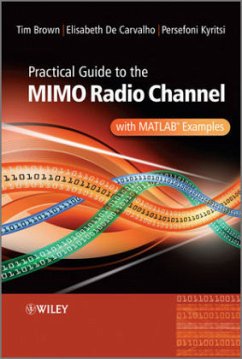
Digital Radio System Design

PAYBACK Punkte
51 °P sammeln!
A systematic explanation of the principles of radio systems, Digital Radio System Design offers a balanced treatment of both digital transceiver modems and RF front-end subsystems and circuits. It provides an in-depth examination of the complete transceiver chain which helps to connect the two topics in a unified system concept. Although the book tackles such diverse fields it treats them in sufficient depth to give the designer a solid foundation and an implementation perspective. Covering the key concepts and factors that characterise and impact radio transmission and reception, the book pre...
A systematic explanation of the principles of radio systems, Digital Radio System Design offers a balanced treatment of both digital transceiver modems and RF front-end subsystems and circuits. It provides an in-depth examination of the complete transceiver chain which helps to connect the two topics in a unified system concept. Although the book tackles such diverse fields it treats them in sufficient depth to give the designer a solid foundation and an implementation perspective. Covering the key concepts and factors that characterise and impact radio transmission and reception, the book presents topics such as receiver design, noise and distortion. Information is provided about more advanced aspects of system design such as implementation losses due to non-idealities. Providing vivid examples, illustrations and detailed case-studies, this book is an ideal introduction to digital radio systems design. * Offers a balanced treatment of digital modem and RF front-end design concepts for complete transceivers * Presents a diverse range of topics related to digital radio design including advanced transmission and synchronization techniques with emphasis on implementation * Provides guidance on imperfections and non-idealities in radio system design * Includes detailed design case-studies incorporating measurement and simulation results to illustrate the theory in practice












